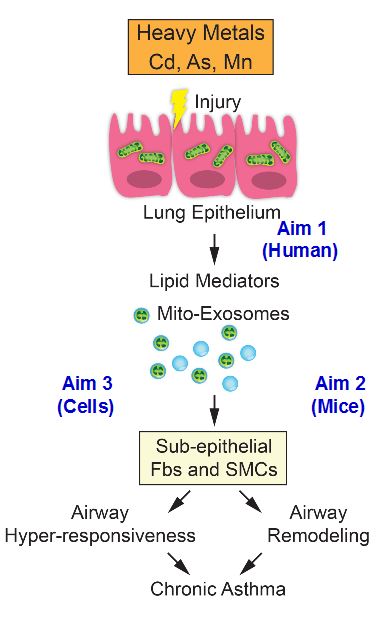Our hypothesis to be tested in this project is that heavy metal (HM) exposures in children induce airway epithelium injury/activation that triggers the release of exosomal lipids to activate fibroblasts(Fbs)/smooth muscle cells (SMCs) that contribute to airway hyper-responsiveness and remodeling in asthma.

Aim 1: Determine whether HM exposure is associated with increased severity of childhood asthma that correlates with higher levels of plasma, EBC and sputum lipid biomarkers. Serum, exhaled breath condensate and sputum samples will be collected from 40 healthy and 40 asthmatic children from both Affected and Control Areas. Differential lipid biomarkers will be identified and correlated with clinical parameters including eosinophils, IgE and FEV1.
Aim 2: Determine the role of lipid mediators/exosomes released by bronchial epithelial cells in airway hyper-responsiveness and remodeling in mice exposed to HMs. Using a mouse model of heavy metal induced allergic asthma, we will evaluate the effects of HM exposure on airway hyper-responsiveness, lipid mediators and exosome release in the airways. Further, we will use genetic strategies and pharmacological inhibitors targeting exosomal lipid metabolism to determine the critical role played by lipids in airway hyper-responsiveness and airway remodeling following HM exposure.
Aim 3: Determine the mechanisms of exosomal lipids in activating fibroblasts/SMCs to pro-fibrogenic phenotypes. Using in vitro-co-culture systems, we will determine lipid-mediated mechanisms by which HM exposed bronchial epithelial-cell derived exosomes induce fibrogenic effects on fibroblasts and proliferative effects on smooth muscle cells.
